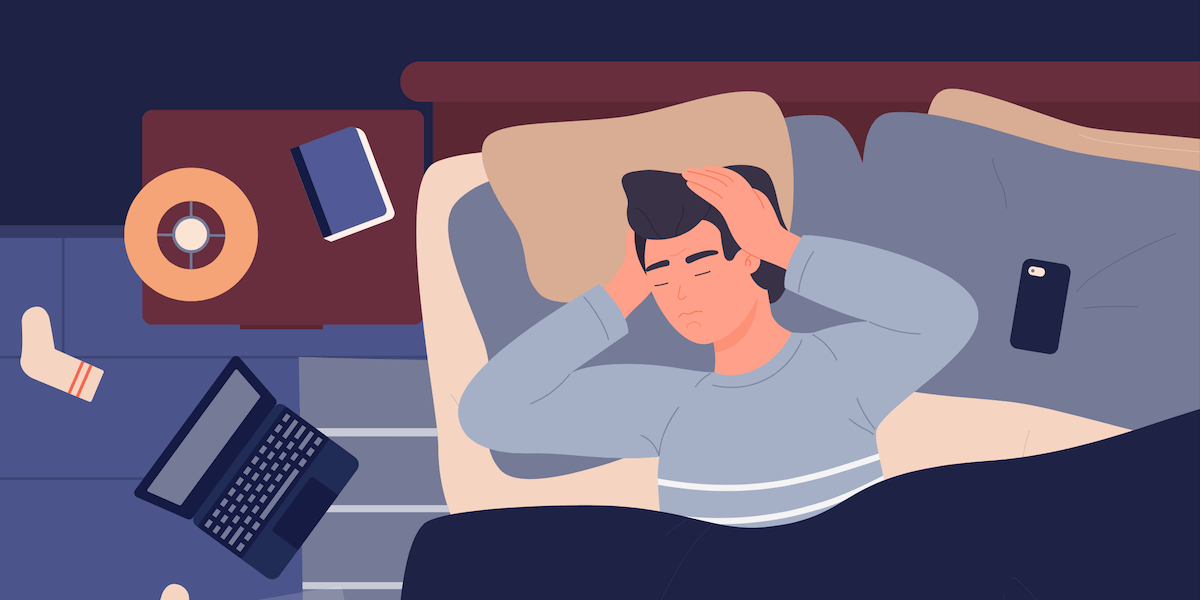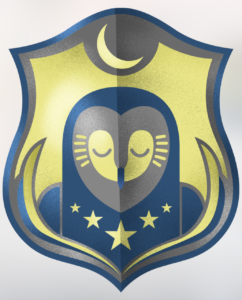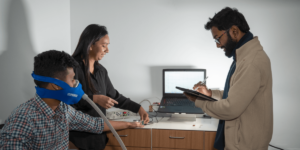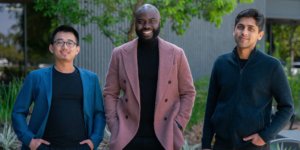
Credit: iStock/Flash vector
In the U.S. alone, seventy million adults have a sleep disorder. In all, 35% of the U.S. population gets less than seven hours of sleep, the recommended amount, each night.
Michael Khoo, Dean’s Professor of Biomedical Engineering and Pediatrics, and his research colleagues in the USC collaboratory known as the Center for Sleep Health using Bioengineering (or “SleepHuB”) know this, and they’re on the case. They acknowledge these sleep problems, as well as how technology may be able to help. Professor Khoo and his team are developing “smart systems” using wearable wristbands and mobile phones to get to the bottom of people’s sleep problems.
“These wearable wristbands are relatively cheap, and can be done every day, by people in their own homes,” Khoo said. “They don’t need to go to the hospital or any kind of lab. That’s the main idea, if we have this thing that’s functioning well with a mobile phone, then we can give it to a thousand people, and they can wear it for days and days, and then we can collect a lot of data.”
In a project recently funded by the Ming Hsieh Institute, Khoo’s team uses optical sensors in wearable wristbands to measure patients’ pulse waves, which reflect dynamic changes in the volume of blood is in the subject’s small vessels. Those vessels constrict and dilate, resulting in fluctuations in the signals within blood. More scientifically, these are called “vascular oscillations.”

USC SleepHuB Logo
The incorporation of wristbands into this research makes studying these oscillations in patients in their home environment a lot easier and more effective at pinpointing what problems an individual patient may have, compared to studying them in the laboratory.
“Sleep studies are intrusive and expensive to conduct, and you need many instruments, so the idea is to try to utilize low-cost technology available on the market commercially,” said Khoo, referencing a big factor in why they chose the creation of wristbands to conduct studies.
The wristbands are commercially available, and with the permission of the manufacturer, Khoo and his team are able to access the raw data. Similar to other research being conducted at USC Viterbi using wearable technology, custom programming and algorithms created for the project allow researchers to interpret the information received from the wristbands to help a patient with a specific medical issue.
Khoo’s research, carried out in collaboration with Drs. Thomas Coates and Saranya Veluswamy from CHLA, focuses, in particular, on people with sickle cell anemia, whose hallmark symptoms are episodes of severe acute pain. Patients with sickle cell, an inherent blood disorder, also have a higher prevalence of sleep-disordered breathing, such as sleep apnea. The USC-CHLA team hypothesizes that vasoconstrictions that occur spontaneously during sleep are amplified by sleep-disordered breathing, thus increasing the likelihood for sickle patients to develop severe and potentially fatal pain crises.
“What we’re trying to track is when these vasoconstrictions are happening, and that’s what we refer to in terms of these oscillations,” said Khoo.
The wearable wristbands allow researchers to examine how oscillations are changing, and how these changes may predict an onset of pain for a patient. Khoo says that their approach to identifying the potential for these types of painful crisis is to not only measure the patient’s pulse rate but also the magnitude of the pulse.
“These vascular oscillations can be caused by stress, which makes your sympathetic level go up,” Khoo said. Sympathetic levels, or nerves within the autonomic nervous system, directly affect things such as heart rate, blood pressure and breathing ability, which negatively affects sleep quality.
Collaborations between Khoo and various members of SleepHuB are addressing other important problems related to sleep disorders. In a new NIH-funded multi-center project Khoo collaborates with SleepHuB colleague, Dr. Sally Ward from CHLA/USC, and other site investigators to study children with both sleep apnea and Down syndrome. One of the solutions to sleep apnea, says Khoo, is wearing a mask that delivers continuous positive pressure (“CPAP”). However, that particular solution is not well tolerated by individuals with Down syndrome.
“What we’re trying to do is see if we just administer oxygen, using a nasal prong, to figure out whether this oxygen treatment will help or not. This has never been proven before, which is why we are trying to see whether or not that might improve their sleep apnea,” Khoo said.
In another grant arising from collaborations developed through SleepHuB, Khoo is partnering with Dr. Eric Kezirian, professor of clinical otolaryngology, head and neck surgery at the Keck School of Medicine of USC and vice chair of the Caruso Department of Otolaryngology. Kezirian is one of only a few surgeons in the country who specializes in the evaluation and surgical treatment of adults with snoring and sleep disorders, removing tissues around upper airways in patients with sleep apnea.
“This kind of surgery is only 50% successful in the long term,” said Khoo. “We are trying to find out how we can do tests on patients to figure out whether or not they are likely to succeed with the surgery.”
With deeper knowledge about the cause of sleep problems in patients gained from applying computational algorithms developed by Dr. Khoo and other bioengineers, medical professionals like Dr. Kezirian can perform surgery more effectively. Other collaborations that have arisen from SleepHuB include USC Suzanne Dworak-Peck School of Social Work Associate Professor, Karen Lincoln, an expert on stress and aging.
“Dr. Lincoln’s team is trying to test for early Alzheimer’s and dementia in African-American elderly subjects by applying brain magnetic resonance imaging (MRI). She’s incorporating wristbands to measure sleep quality in order to determine whether poor sleep accelerates the development of cognitive impairment,” Khoo explained.
Another SleepHuB collaborator, Viterbi Professor Krishna Nayak, is aiming to use a low-field MRI scanner to study the dynamic patterns of the upper and lower airways of the lungs during sleep.
While sleep problems are caused by a wide variety of diseases and disorders, it’s apparent that Khoo and his collaborators in SleepHuB are passionately deploying every technological resource to help their patients get a better night’s sleep.
Published on January 19th, 2023
Last updated on January 19th, 2023











